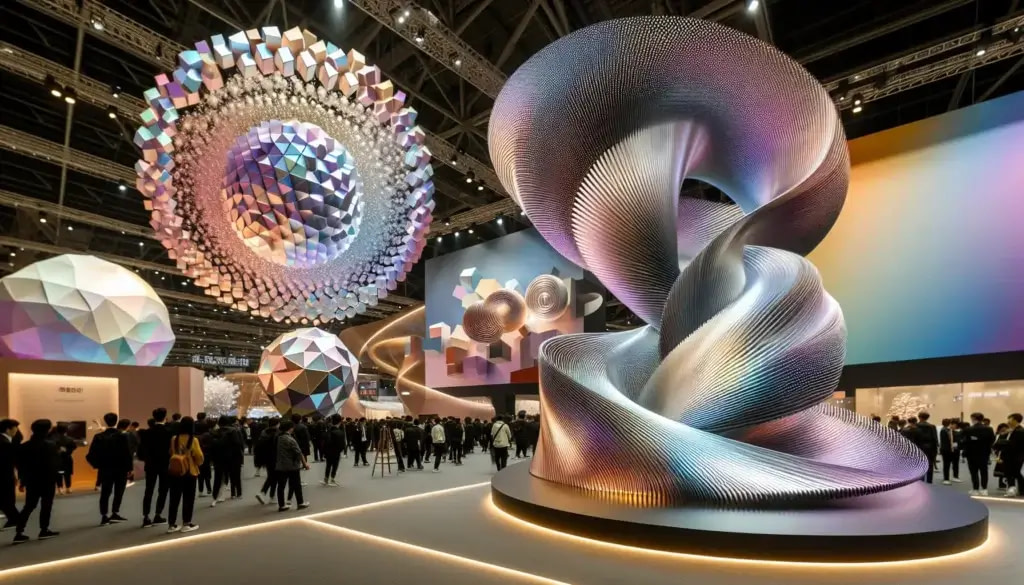Exhibition Decorating Guide: How to Create an Impactful and Intriguing Space
Exhibition decorating refers to the process of designing, arranging, and furnishing a space for an event, trade show, or gallery display. These exhibitions could be for business expos, public showcases, educational conferences, or cultural fairs. A well-designed exhibition area not only displays content effectively but also encourages visitor engagement and improves the overall experience.
The practice includes layout planning, color schemes, lighting design, signage, interactive elements, and branding materials. Whether it’s a booth in a trade fair or an entire event space, decorating with purpose helps communicate a brand’s message or an artist’s vision more effectively.

Why Exhibition Design Matters Today
In a world saturated with digital communication, physical exhibitions provide a unique opportunity for face-to-face interaction. Whether it's a company unveiling a product, a museum showcasing history, or an NGO spreading awareness, the power of visual storytelling and spatial engagement remains strong.
Some key reasons why exhibition decorating is essential today include:
-
First Impressions: Attendees often form an opinion about a brand or project in the first few seconds. Effective decoration sets the tone and grabs attention.
-
Audience Engagement: Well-planned spaces keep visitors curious, focused, and more likely to interact or share their experiences.
-
Brand Identity: Design elements such as fonts, color palettes, and materials help convey the values and aesthetics of the brand or organizer.
-
Accessibility: Thoughtful design ensures that the space is usable for everyone, including those with disabilities.
-
Competition: With numerous exhibitions occurring globally, unique decoration gives one an edge over others in the same space.
Industries like technology, tourism, education, and art especially benefit from impactful exhibit designs that attract both local and international audiences.
Recent Trends and Updates in Exhibition Decoration (2024–2025)
The exhibition industry has seen significant shifts in recent years, especially after the pandemic-induced pause on public gatherings. Here are a few noteworthy trends and updates:
| Trend | Description |
|---|---|
| Hybrid Exhibitions | Combining physical setups with virtual interaction to reach broader audiences. |
| Sustainable Materials | Use of recyclable, modular components and eco-friendly materials. |
| Immersive Tech | Augmented reality (AR), QR-based interactivity, and LED walls are popular. |
| Biophilic Design | Integrating natural elements such as plants, water features, and wood textures. |
| Minimalist Layouts | Clean and spacious arrangements reduce visual fatigue. |
Regulations and Compliance Considerations
Exhibition decorations are often governed by local building codes, fire safety regulations, and accessibility standards. While rules can vary by country and venue, there are common regulatory themes across many regions:
-
Fire Safety Standards: All materials used must be flame-retardant. Fire exits should never be obstructed by decorative items.
-
Accessibility Requirements: Guidelines such as the Americans with Disabilities Act (ADA) in the U.S. require exhibits to accommodate wheelchairs, provide proper signage, and offer accessible interaction points.
-
Electrical Setup Approvals: Wiring and lighting must follow electrical safety codes and often need on-site inspection before approval.
-
Noise and Light Regulations: Some venues have rules on maximum decibel levels and brightness, especially near residential areas.
In the EU, the EN 13501-1 fire classification for building materials is commonly applied, while in India, the NBC (National Building Code) and BIS (Bureau of Indian Standards) regulate such installations. Always consult the specific event or venue manual before planning decorations.
Helpful Tools and Resources for Planning
Modern exhibition decoration has been made easier through a variety of digital and professional resources. These tools assist with design visualization, project management, and vendor coordination:
| Tool/Resource | Purpose |
|---|---|
| SketchUp | 3D modeling software for booth and layout design |
| Canva / Adobe Express | Quick mockups of banners, posters, and signage |
| ExpoFP | Online tool to create interactive exhibition floor maps |
| Trello / Asana | Project planning and task delegation |
| Eventbrite / Whova | Manage registrations and attendee flow |
| Modular Booth Kits | Reusable hardware for sustainable, flexible setups |
Frequently Asked Questions (FAQs)
Q1. What’s the difference between booth design and exhibition decorating?
Booth design refers specifically to an individual company or participant’s space, while exhibition decorating encompasses the overall layout and style of the entire venue, including shared areas, signage, and ambient themes.
Q2. How much budget is typically required for exhibition decoration?
Budgets can vary widely based on size and complexity. A small booth might cost $1,000–$5,000, while full-scale decorations for a hall can range from $10,000 to over $100,000 depending on materials, technology, and custom elements.
Q3. Can I decorate an exhibition space myself or do I need a professional?
It is possible to do it yourself for small-scale exhibitions using modular systems and templates. However, for medium to large events or when aiming for high visual impact, hiring professionals ensures quality, safety compliance, and better audience engagement.
Q4. What are eco-friendly decorating options for exhibitions?
Sustainable options include using bamboo structures, recycled aluminum frames, LED lighting, fabric graphics, digital signage (instead of printed flyers), and modular reusable booths.
Q5. What is the lead time for planning exhibition decoration?
Ideally, planning should start 3–6 months in advance to allow for design revisions, material procurement, and compliance checks. Larger exhibitions may require even more lead time.
Conclusion
Exhibition decorating is more than just making a space look attractive—it’s about curating an environment that tells a story, engages visitors, and achieves specific goals. With evolving technologies, growing sustainability concerns, and changing user expectations, it’s essential to blend creativity with compliance and practicality.